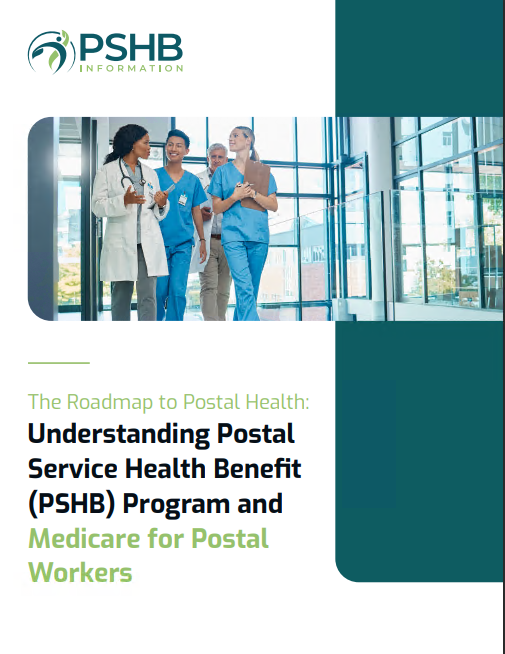Key Takeaways
- The Postal Service Health Benefits (PSHB) program is set to begin on January 1, 2025, offering postal employees a new health insurance option.
- Open Season for PSHB enrollment runs from November 11, 2024, through December 9, 2024—mark your calendars to make timely decisions.
What is the PSHB, and Why is It Important?
As postal workers, the upcoming Postal Service Health Benefits (PSHB) program raises several questions. This significant change in health coverage impacts all Postal Service employees and retirees. It’s essential to understand how it differs from other programs like the Federal Employees Health Benefits (FEHB) and how it aligns with your needs. The PSHB program is scheduled to launch on January 1, 2025, and will replace FEHB coverage for eligible postal workers and retirees. With Open Season running from November 11, 2024, through December 9, 2024, there’s ample time to explore your options and make an informed decision. In this article, I’ll walk you through the key points that USPS’s latest webinars are addressing regarding the PSHB program, so you can feel more prepared as the enrollment period approaches.What’s Changing for Postal Workers with PSHB?
The PSHB program represents a significant shift in health coverage. It’s designed to meet the specific needs of Postal Service employees and retirees. If you’re familiar with FEHB, you may wonder how much of your current coverage is being affected by this transition.Key Changes Under PSHB
- Exclusive to Postal Employees and Retirees: Unlike FEHB, the PSHB program is tailored to Postal Service employees, providing plans with their unique needs in mind.
- Medicare Integration for Retirees: PSHB is integrated with Medicare for retirees aged 65 and older, offering better coordination between your PSHB coverage and Medicare benefits.
- No Major Disruption: USPS has emphasized that there will be no gaps in coverage during the transition from FEHB to PSHB, so you don’t need to worry about losing coverage as long as you enroll during Open Season.
What You Need to Know About PSHB Enrollment
Enrolling in PSHB isn’t automatic for everyone. Whether you’re an active postal worker or a retiree, you need to make decisions based on your personal situation. So, what does the enrollment process look like?Enrollment Details
- Open Season Enrollment (November 11, 2024 – December 9, 2024): This is your window to enroll in a PSHB plan or make changes to your current health coverage.
- Who Needs to Enroll: Active postal employees will automatically be moved to PSHB. However, retirees and those eligible for Medicare may need to take additional steps, particularly if they are over 65.
- Plan Comparisons: USPS is offering detailed comparisons of the different PSHB plan options. If you’re satisfied with your current FEHB plan, PSHB may offer similar or even better options tailored to postal employees.
How Will PSHB Affect Retirees?
If you’re nearing retirement or already retired, the shift to PSHB may feel especially significant. A key focus of USPS’s recent webinars is how this new program will work alongside Medicare.Important Considerations for Retirees
- Medicare Requirement for Retirees: If you’re 65 or older, you’ll need to enroll in Medicare Part A and Part B to maintain PSHB coverage. This ensures that your PSHB plan works in tandem with Medicare, helping to reduce out-of-pocket costs.
- Transition for Current Retirees: Current retirees enrolled in FEHB will have their coverage transitioned to PSHB. USPS assures that this process will be smooth, but retirees must be vigilant about their Medicare enrollment.
Will PSHB Plans Be More Affordable?
A common question USPS employees have been asking in webinars is whether the PSHB plans will be more affordable than their current FEHB plans. While specific pricing details haven’t been released yet, USPS is highlighting several factors that suggest potential cost savings.Key Factors Influencing Cost
- Plans Tailored for Postal Workers: The PSHB plans are designed specifically with postal workers’ needs in mind, meaning the costs may reflect a better value for the coverage provided.
- Medicare Integration: For retirees, the integration with Medicare could lower overall costs by minimizing redundant coverage and streamlining benefits.
How to Prepare for PSHB Open Season
With Open Season just a few months away, now is the time to start preparing. USPS is providing webinars, online resources, and plan comparison tools to help guide you through this new health benefits landscape.Tips for a Smooth Transition
- Attend a Webinar: USPS is holding frequent webinars to explain PSHB and answer employee questions. If you haven’t attended one yet, it’s highly recommended. These sessions are packed with valuable information that could help you make more informed decisions.
- Review Your Current Coverage: Take some time to review your current FEHB plan. This will give you a better sense of what changes to expect and help you compare it with PSHB options.
- Mark Key Dates on Your Calendar: Don’t forget that Open Season runs from November 11, 2024, through December 9, 2024. You’ll want to make your PSHB selections before this deadline to ensure uninterrupted coverage.






